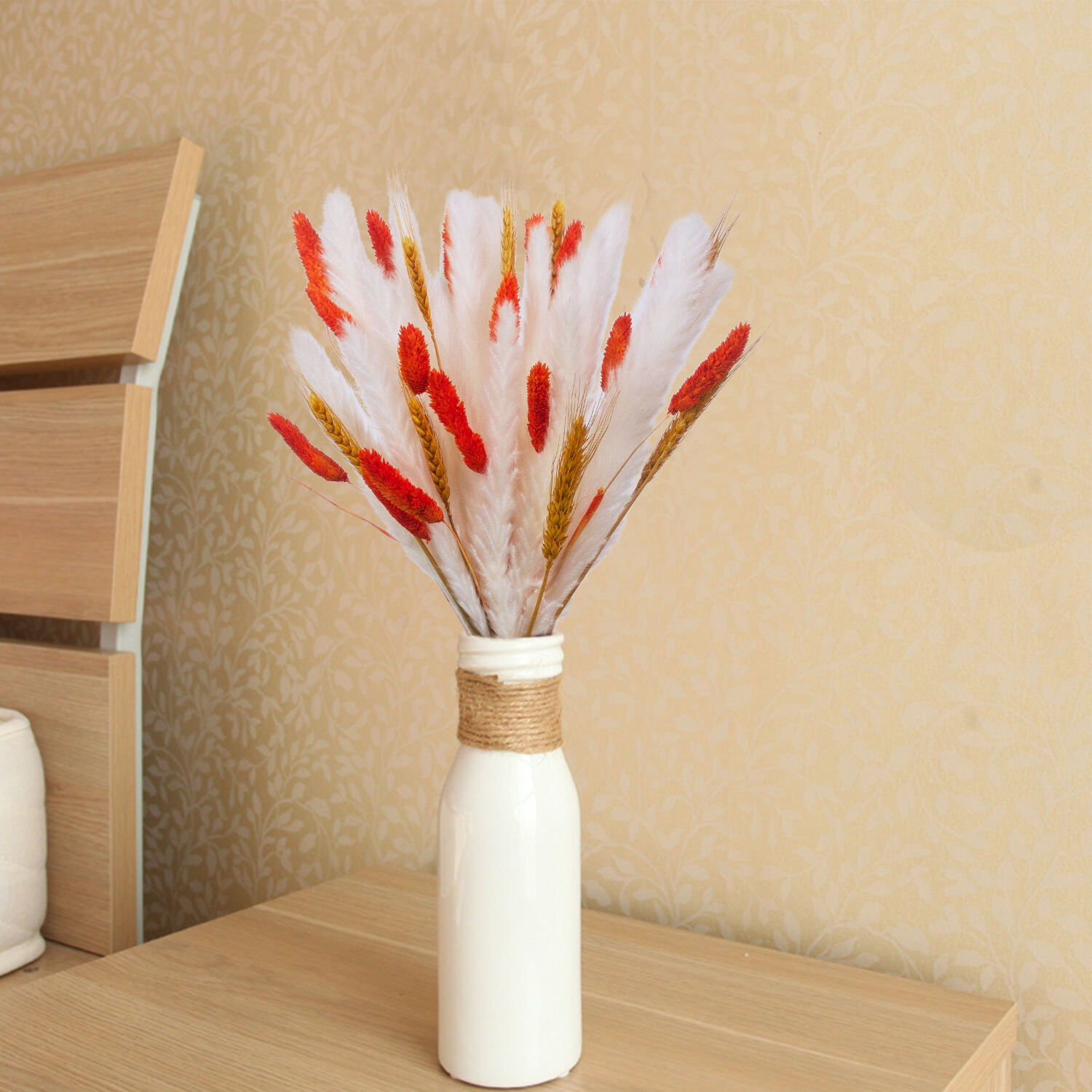
Explore our extensive selection of dried flowers wholesale including pampas grass and preserved roses Our preserved flowers are perfect for creating stunning arrangements that last beautifully in any setting
Nature's beauty has always captivated us, but its ephemeral quality often leaves us wanting more. Enter preserved flowers - a revolutionary approach to maintaining floral beauty that combines artistry with innovative preservation techniques. These stunning blooms maintain their natural appearance and soft texture for months or even years, offering a sustainable alternative to both fresh and artificial flowers.
Preserved flowers undergo a specialized process where natural flowers are carefully treated with a mixture of glycerin and other plant-based compounds. This process replaces the sap within the flowers, effectively preserving their beauty at the peak of their bloom. The result is remarkably lifelike flowers that retain their natural shape, color, and texture while lasting significantly longer than their fresh counterparts.
The journey of creating preserved flowers begins with selecting premium blooms at their peak freshness. These flowers undergo a meticulous preservation process that typically takes several weeks. The stems are placed in a special solution that gradually replaces the natural sap with a preservation mixture. This solution travels up through the stem and into every part of the flower, including petals and leaves, ensuring complete preservation.
Different types of flowers require varying preservation techniques and solution compositions. Some delicate blooms might need additional steps or specific environmental conditions during the process. The expertise lies in understanding exactly how each flower variety responds to preservation and adjusting the method accordingly.
Once the preservation process is complete, some flowers undergo careful color enhancement to maintain or improve their natural hues. This step is crucial as it ensures the preserved flowers maintain their vibrant appearance over time. The colors are fixed using special dyes and stabilizers that work in harmony with the preservation solution, creating long-lasting, natural-looking results.
Advanced preservation techniques also focus on maintaining the flowers' texture and flexibility. Unlike dried flowers that become brittle, preserved flowers retain a soft, natural feel that closely resembles fresh blooms. This characteristic makes them particularly appealing for various decorative applications.

Preserved flowers have revolutionized home decoration by offering lasting beauty without constant maintenance. They're perfect for creating stunning centerpieces, wall arrangements, or standalone displays that maintain their appeal for extended periods. Their versatility allows them to complement any interior design style, from minimalist modern to classic traditional.
Many homeowners appreciate preserved flowers for their ability to bring natural elements into spaces where fresh flowers might not thrive. They're ideal for rooms with limited natural light or areas where regular maintenance might be challenging. The long-lasting nature of preserved flowers makes them a cost-effective choice for permanent decorative installations.
The events industry has embraced preserved flowers for their reliability and stunning appearance. Wedding planners particularly value these blooms for their ability to be prepared well in advance and their guaranteed perfect appearance on the big day. Hotels, restaurants, and retail spaces utilize preserved flowers to create impressive displays that maintain their beauty without daily maintenance.
Corporate environments benefit from preserved flowers as they provide a touch of nature without the need for regular replacement or maintenance. They're particularly popular in high-end retail locations, luxury hotels, and professional office spaces where maintaining a consistently polished appearance is crucial.
In an era of increasing environmental consciousness, preserved flowers offer significant ecological advantages. They reduce the carbon footprint associated with frequent flower deliveries and minimize water consumption compared to maintaining fresh flowers. The long lifespan of preserved flowers means fewer replacements are needed, resulting in reduced waste and transportation impacts.
The preservation process typically utilizes biodegradable solutions and environmentally friendly practices. Many companies specializing in flower preservation are adopting sustainable packaging and production methods, further enhancing their eco-friendly appeal.
While the initial investment in preserved flowers might be higher than fresh flowers, their longevity makes them more economical in the long run. When calculating the cost per month of enjoyment, preserved flowers often prove more budget-friendly than maintaining fresh flower arrangements that need weekly replacement.
Businesses particularly benefit from this cost-effectiveness, as they can amortize the initial investment over many months rather than continually purchasing fresh flowers. The reduction in maintenance time and resources adds to the overall economic advantages of choosing preserved flowers.
Preserved flowers thrive in indoor environments with moderate temperatures and humidity levels. Avoiding direct sunlight helps maintain their color vibrancy, while keeping them away from heat sources prevents premature aging. Simple placement considerations can significantly extend their already impressive lifespan.
Regular light dusting with a soft brush or compressed air helps maintain their fresh appearance. Unlike fresh flowers, they don't require water or trimming, making them incredibly low-maintenance while continuing to add beauty to any space.
To maximize the longevity of preserved flowers, it's important to handle them gently and avoid exposure to moisture. While they're more durable than fresh flowers, careful handling ensures they maintain their beauty for years. Storing them in covered displays or glass domes can provide additional protection while creating elegant presentation options.
When moving or rearranging preserved flower arrangements, gentle handling prevents damage to delicate petals and stems. With proper care, these beautiful blooms can maintain their appearance for several years, making them a worthy investment in lasting natural beauty.
With proper care and maintenance, preserved flowers can maintain their beauty for one to three years, sometimes even longer. Their longevity depends on environmental conditions and how well they're protected from direct sunlight, moisture, and physical damage.
Yes, preserved flowers can be enhanced with special dyes during the preservation process to achieve various colors while maintaining their natural texture and appearance. This makes them versatile for matching specific color schemes or design preferences.
Preserved flowers are excellent alternatives for people with pollen allergies since the preservation process removes allergenic components while maintaining the flowers' natural beauty. They provide an opportunity to enjoy floral arrangements without the associated allergy concerns.